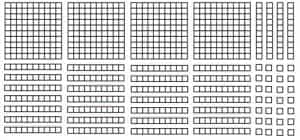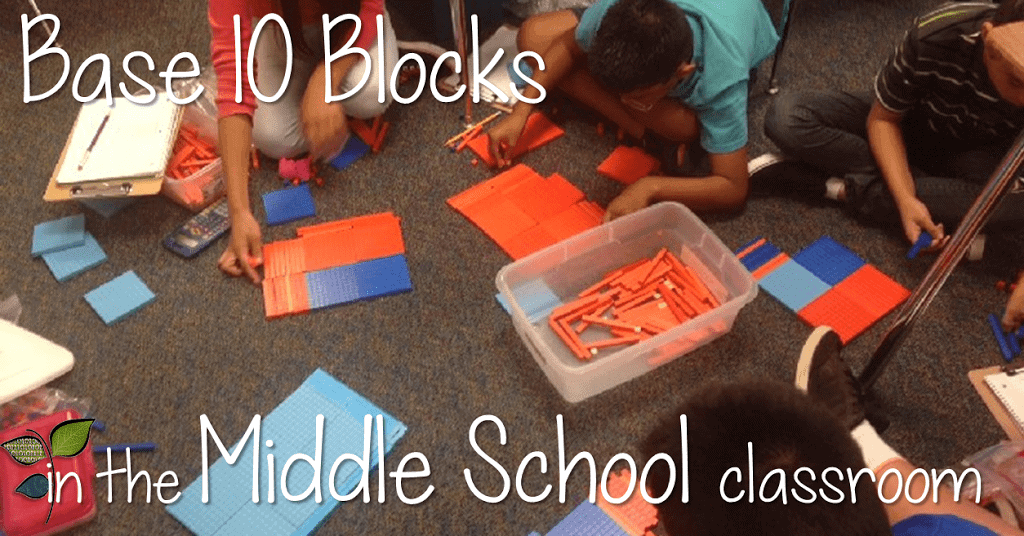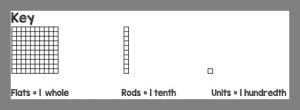You may be familiar with base ten blocks as a tool for young learners to discover place value relationships, but did you know that there are uses for them with older students as well?
One way that students in fourth and fifth grade can use base ten blocks is for creating arrays and area models. The use of the base ten blocks models how place value concepts continue to work when multiplying and dividing. Using the base ten blocks in this way will also help prepare students to use algebra tiles later on.
| This alternate key for interpreting base ten blocks can be used with older students to allow the modeling of decimals! |
Did you know that base ten blocks can be used with different keys? In the early grades the smallest cube, the unit, is used to represent 1, but in fifth grade the key can be changed and the unit block now represents a hundredth. This allows decimal operations to be represented using the manipulative. In this key, the flat is now one whole and resembles the 100s grid that is often used to show decimals and percents!

| This area model created using base 10 blocks shows the expression 44 x 17 when using the standard key, but when using the alternate key shown above, this model shows the expression 4.4 x 1.7. |
Base ten blocks are also used to model division strategies that are important for students to understand because of the new Common Core and TEKS standards in fourth and fifth grade. Besides standard algorithm, or long division, students also need to understand other models of division. This can include area models, fair shares, and partial quotients. All of these strategies can be introduced and modeled with base ten blocks. A great online game to practice the fair share division strategy can be found at Math Playground’s Dare to Share Fairly. This game is also available on the app store for iPad.
Before using base ten blocks to create area models in your classroom with your students, make sure to practice some on your own or with a colleague. Although technically possible to represent 3 digit by 2 digit multiplication expressions, these models are very complex and are actually 3D models that require the use of the large cube. For these models, you will want to stick with, at most, 2 digit by 2 digit multiplication expressions. By looking at the example above, you can see how the pieces line up.
How do you use base ten blocks in your classroom?








1 thought on “Base 10 Blocks in the Middle Grades”
Thank you so much for sharing that game! You know, the standards and new way of teaching things is montessori and the way montessori has been teaching it for over a hundred years! I think its fabulous that we moved to a way that kids can see "why". Your decimal number line material is fabulous. There are not very many people who make it to teach as the PARCC and other rigorous tests demand. Yours does! Thank you! I am Philicia, a newbie blogger at http://www.motivationinthemiddle.com